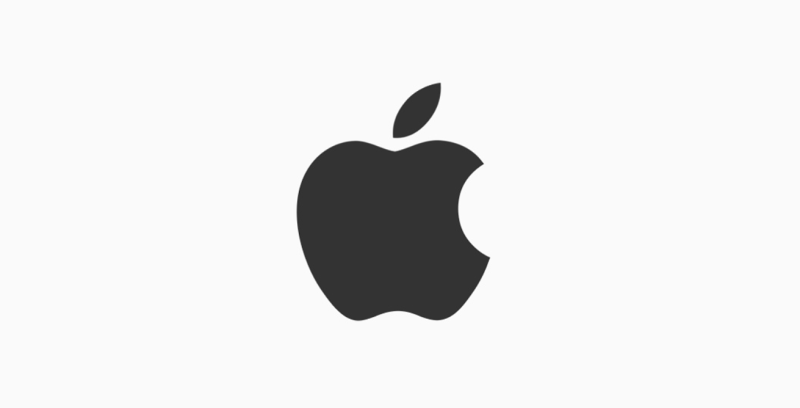
Apple Inc., a renowned American computer and consumer electronics company, has left an indelible mark on the world with its innovative products and cutting-edge technology. From its humble beginnings in a garage to becoming a trillion-dollar company, Apple has transformed the way we interact with computers, smartphones, tablets, and more. In this comprehensive article, we will take you on a journey through Apple’s intriguing history, explore its iconic products, delve into the company’s headquarters, and uncover some fascinating facts. So, let’s dive in and discover the captivating world of Apple.
The Birth of Apple: A Garage Start-up
In April 1976, two college dropouts, Steve Jobs and Steve Wozniak, founded Apple Computer Inc. with a vision to revolutionize the computer industry. The company had its genesis in Jobs’ family garage, where they built their first product, the Apple I microcomputer. Although it was initially sold as a bare circuit board without a monitor, keyboard, or casing, the Apple I laid the foundation for its future success.
Driven by their passion for creating user-friendly computers, Jobs and Wozniak introduced the Apple II in 1977, which became a game-changer in the industry. With its color graphics and easy-to-use interface, the Apple II quickly gained popularity, propelling Apple to the forefront of the personal computer market. Sales skyrocketed from $7.8 million in 1978 to an astounding $117 million in 1980, the year the company went public.
Commercial Success and Fierce Competition
As Apple’s profits and size grew, the company faced fierce competition from the industry giant, International Business Machines Corporation (IBM). IBM introduced its own line of personal computers, the IBM PC, in 1981, posing a significant challenge to Apple’s market dominance. IBM’s PC featured a graphical interface similar to Apple’s, and its compatibility with various hardware components and software attracted a wide range of software developers.
Despite the intense competition, Apple continued to innovate and captured the imagination of consumers with its groundbreaking products. In 1983, they introduced the Apple Lisa, a computer that incorporated a graphical user interface (GUI), mouse, and icons, making it more intuitive and user-friendly. However, due to its high price and limited software availability, the Lisa failed to gain widespread adoption.
Revolutionizing the Industry: The Macintosh and GUI
Undeterred by the Lisa’s lackluster performance, Apple forged ahead and introduced the Macintosh in 1984. The Macintosh was a game-changer, featuring an innovative GUI and an iconic Super Bowl commercial that captured the world’s attention. With its friendly and approachable design, the Macintosh appealed to a broader audience and set a new standard for personal computers.
Under Steve Jobs’ leadership, Apple’s commitment to innovation and design excellence continued to drive its success. The company released a series of Macintosh models, each pushing the boundaries of technology and user experience. The Macintosh line evolved over the years, with the introduction of iMac, Mac mini, Mac Pro, MacBook Air, and MacBook Pro, catering to diverse user needs and preferences.
Expanding Product Lines: iPhones, iPads, and More
In 2007, Apple revolutionized the mobile industry with the introduction of the iPhone. Combining a sleek design, a powerful operating system, and a multi-touch interface, the iPhone became an instant sensation. It transformed the way people communicate, access information, and interact with technology. Subsequent iPhone models, including the iPhone 4 and iPhone 14 Pro, continued to push the boundaries of innovation, offering advanced features and cutting-edge technologies.
Building on the success of the iPhone, Apple expanded its product line to include the iPad in 2010. The iPad redefined the tablet market, providing users with a versatile device for work, entertainment, and creativity. With its intuitive interface, extensive app ecosystem, and powerful hardware, the iPad became a popular choice for professionals, students, and casual users alike.
In addition to smartphones and tablets, Apple ventured into the wearables market with the release of the Apple Watch in 2015. The Apple Watch combines fitness tracking, communication capabilities, and customizable watch faces, making it a sought-after accessory for health-conscious individuals and tech enthusiasts.
Apple’s Headquarters: Innovation Meets Architectural Marvel
Apple’s headquarters, located in Cupertino, California, is a testament to the company’s commitment to innovation and design excellence. The Apple Park, also known as the “Spaceship,” is a state-of-the-art facility that reflects Apple’s forward-thinking approach. Designed by renowned architect Norman Foster, the circular building features a seamless blend of glass, concrete, and steel, creating a harmonious and sustainable work environment.
Apple Park encompasses a multitude of amenities, including a theater named after Steve Jobs, where the company holds product launches and special events. The campus also boasts sprawling green spaces, walking trails, and the Steve Jobs Fitness Center, promoting employee well-being and creativity.
Innovative Features and Technologies
Apple has been at the forefront of technological innovation, consistently introducing groundbreaking features and technologies. Some notable innovations include:
- Retina Display: Apple’s Retina Display technology offers incredibly sharp and vibrant visuals, providing users with an immersive viewing experience across various devices.
- Touch ID and Face ID: Apple pioneered biometric authentication with Touch ID and later introduced Face ID, revolutionizing device security and unlocking methods.
- Siri: Apple’s intelligent voice assistant, Siri, allows users to interact with their devices using natural language commands, making tasks more convenient and efficient.
- Apple Pencil: The Apple Pencil revolutionized digital note-taking and drawing on the iPad, offering precise and responsive input for creatives and professionals.
- ARKit: Apple’s augmented reality (AR) development platform, ARKit, enables developers to create immersive AR experiences, merging the virtual and real worlds.
The Apple Ecosystem: Seamlessly Connected Devices
One of Apple’s key strengths lies in its ecosystem of seamlessly connected devices. The Apple ecosystem allows users to effortlessly transition between their iPhone, iPad, Mac, Apple Watch, and other Apple products, creating a seamless and integrated user experience. Features like Handoff, Continuity, and iCloud ensure that users can start a task on one device and seamlessly continue it on another.
Apple’s ecosystem is further enhanced by its robust software and services. iCloud provides seamless synchronization of files, photos, and data across devices, while services like Apple Music, Apple TV+, and Apple Arcade offer a rich entertainment experience. Apple’s commitment to privacy and security is also evident in its ecosystem, ensuring that user data remains protected and confidential.
Apple’s Impact on Society and Pop Culture
Apple’s products have not only transformed technology but also had a profound impact on society and pop culture. The iPhone, with its advanced camera capabilities, has democratized photography, enabling anyone to capture and share moments with ease. Social media platforms like Instagram owe much of their success to the ubiquity of the iPhone.
Apple’s role in the music industry cannot be overstated. The introduction of iTunes and later Apple Music revolutionized the way people consume and discover music, reshaping the music industry landscape. Apple’s iPod, with its iconic white earphones, became a cultural phenomenon and a symbol of technological innovation.
Apple’s Commitment to Privacy and Security
Apple has been a staunch advocate for user privacy and security, setting itself apart from other tech giants. The company has implemented robust encryption methods and stringent privacy policies to safeguard user data. Features like App Tracking Transparency, which gives users control over app tracking, highlight Apple’s commitment to protecting user privacy.
Apple’s dedication to security is evident in its stringent app review process, which ensures that apps available on the App Store meet strict guidelines and do not compromise user data. The company’s approach to privacy and security has garnered praise from users and privacy advocates alike, reinforcing Apple’s position as a trusted custodian of user information.
Fun Facts About Apple
Let’s conclude our journey through Apple with some fascinating and lesser-known facts:
- Apple’s logo, the iconic bitten apple, was inspired by the mathematician and computer scientist, Alan Turing, who took a bite out of an apple laced with cyanide.
- Apple’s co-founder, Steve Wozniak, is widely recognized as the inventor of the personal computer, as his Apple I sparked the microcomputer revolution.
- To raise money for the development of the original Apple computer, Steve Jobs sold his Volkswagen van, and Steve Wozniak sold his scientific calculator.
- Apple’s App Store, launched in 2008, revolutionized the software distribution model, enabling developers to reach a global audience and creating a thriving app economy.
- Apple has a robust environmental commitment, with a goal to be carbon neutral by 2030 and a strong focus on renewable energy and sustainable manufacturing practices.
- Apple’s Siri voice assistant was named after a Norwegian word meaning “beautiful woman who leads you to victory.”
- The Apple iPhone’s camera has become one of the most widely used cameras in the world, with millions of photos taken every day.
As we conclude our exploration of Apple’s history, products, headquarters, and facts, it’s clear that the company’s impact is far-reaching and its commitment to innovation unwavering. From its humble beginnings in a garage to becoming a global technology powerhouse, Apple continues to push the boundaries of what is possible, creating products that inspire and empower users worldwide. Whether it’s the sleek design of their devices, the user-friendly interface, or their commitment to privacy and security, Apple remains a symbol of excellence and innovation in the tech industry.





